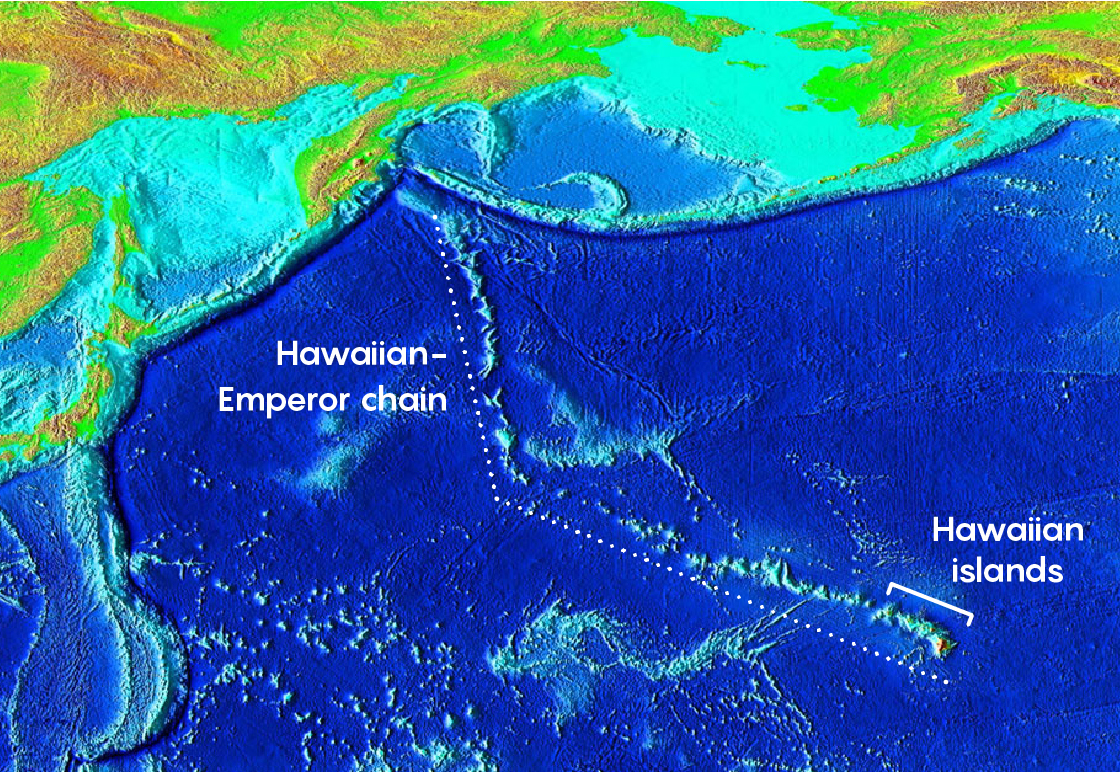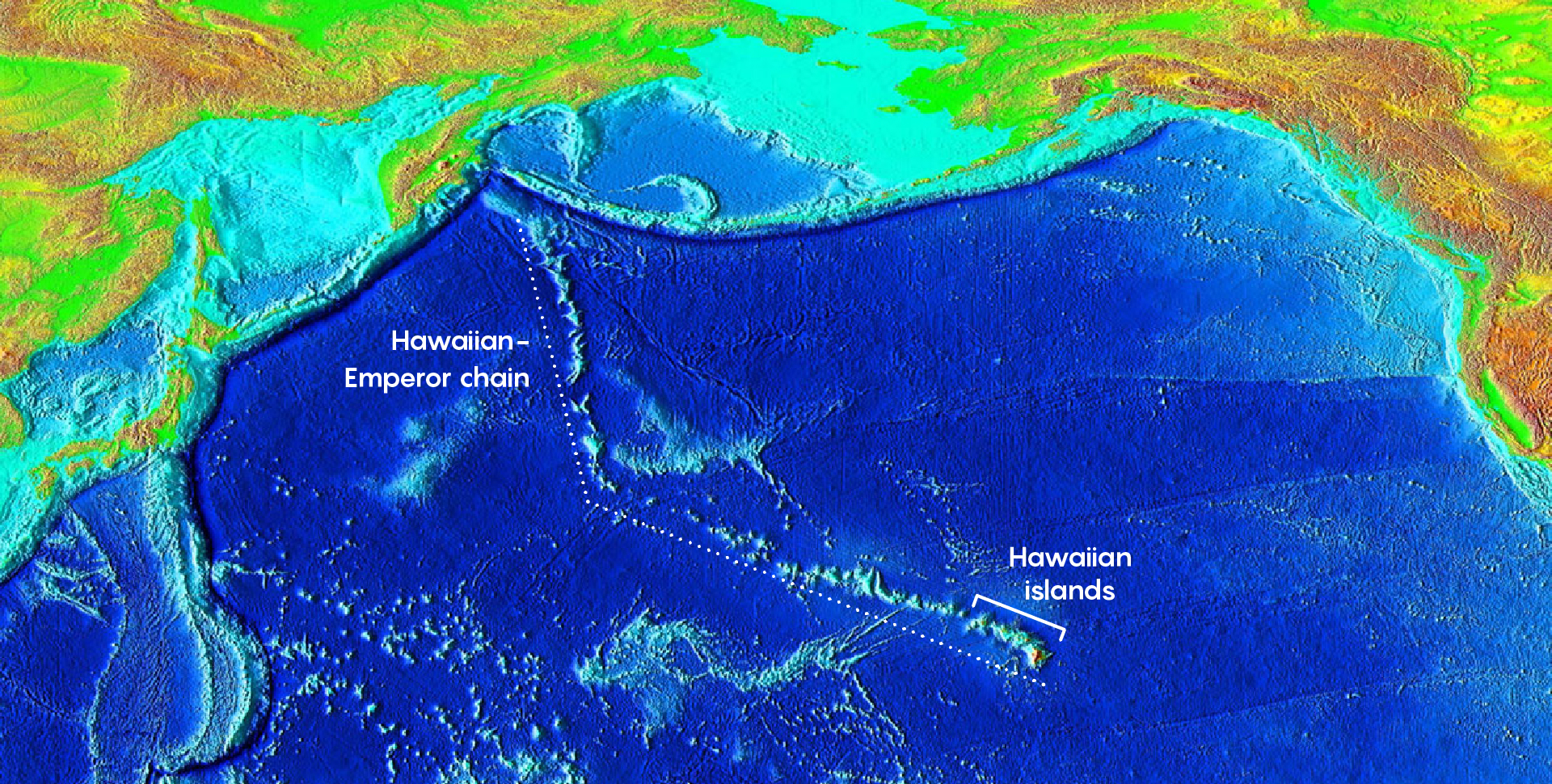Continents of the Underworld Come Into Focus
Introduction
Decades ago, scientists first harnessed the echoes of earthquakes to make a map of Earth’s deep interior. They didn’t just find the onion layers you might remember from a grade school textbook — core and mantle covered by a cracked crust. Instead, they saw the vague outlines of two vast anomalies, unknown forms staring back from the abyss.
Over the years, better maps kept showing the same bloblike features. One huddles under Africa; the other is beneath the Pacific. They lurk where the planet’s molten iron core meets its rocky mantle, floating like mega-continents in the underworld. Their highest points may measure over 100 times the height of Everest. And if you somehow brought them to the surface, God forbid, they contain enough material to cover the entire globe in a lava lake roughly 100 kilometers deep.
“It would be like having an object in the sky, and asking, ‘Is that the moon?’ And people are like, no. ‘Is that the sun?’ No. ‘What is it?’ We don’t know!” said Vedran Lekić, a seismologist at the University of Maryland. “And whatever it is, it is intimately tied to the evolution of the Earth.”
The first mystery of these hulking, hidden seismic features is whether they’re made of different stuff than the rest of the Earth’s mantle. The second: How do these patterns in the deep leave traces on our surface world?
Neither case is settled. But in recent years, many earth scientists have begun to make the case that these vague shapes are piles of dense, smoldering rock that date to the dawn of the planet. And multiple studies in the past year have argued that their persistent influence might be responsible for long-puzzling patterns in volcanic hot spots like Hawaii.
“These are the largest things on the planet,” said Ed Garnero, a seismologist at Arizona State University. “Only recently have I started thinking, ‘Wow, this is potentially super profound.’”
Core of the Matter
If an omnipotent scientific illustrator halved the Earth, they would first need to cut through the thin crust we live on, which is broken into shifting tectonic plates. Then they’d pass through the rocky mantle. Only at 2,900 kilometers down, about halfway to the very center, would they hit the core-mantle boundary.
To map that part of the Earth, seismologists use the waves released by earthquakes. As the waves rattle outward, they change speed depending on what material they pass through. That causes them to arrive at different monitoring stations at different times. In 1984, the Harvard researcher Adam Dziewonski first integrated data from many different earthquakes into a global map. The two blobs showed up immediately, attached to the core on either side like Princess Leia side buns.
In these regions, earthquake waves seem to slow down, suggesting that the blobs are hotter than the surrounding mantle. How do we know this? Rock expands when heated. That causes waves to travel sluggishly through warm regions, said Garnero, like the slower vibrations moving through a loose guitar string.
The slowing waves gave these features their formal name: large low-shear-velocity provinces, or LLSVPs — an unmagical abbreviation that may have contributed to the topic’s low profile. “We are also to blame,” said Sanne Cottaar, a seismologist at the University of Cambridge, “for misnaming this feature so badly.”
At first, earth scientists contemplating these warm patches argued that their one obvious trait, the warmth, was where the story ended. Some still do.
This school of thought holds that the blobs are mostly just thermal features. Over time, the mantle roils like an unbearably slow-boiling pot of water. Heat comes from the bottom, where the mantle touches the core, and this heat causes rock in the mantle to waft up in plumes. Where seismologists map blobs, they could just be seeing the blurred base regions of the world’s biggest clusters of hot plumes.
In this view, the blobs are mostly made up of the same stuff as the rest of the mantle. And their placement is dictated by plate tectonics from above, not by anything inherent and spooky about these regions. When one tectonic plate in Earth’s crust is pushed below another in a process called subduction, it sinks. This sends colder rock down into the mantle.
Yet no plates have subducted over the blob regions for the last few hundred million years, said Saskia Goes of Imperial College London. “It’s the absence of cold material that makes these relatively hot.”
The opposing camp, meanwhile, doesn’t doubt that plumes rise from the hot blob regions. They just argue that the blobs are special in and of themselves.
Since the mid-2000s, several teams of seismologists have looked at earthquake signals that just graze the edges of these regions. Those signals show complicated patterns, indicating that the waves were skimming across a relatively crisp boundary. This suggests that the edges of the blobs mark a transition between materials, not just temperature.
In this view, the blobs are so-called thermochemical piles, clumps of dense rock with a distinct chemical composition. Because of their prolonged contact with the core, they are hotter than the rest of the mantle, causing plumes to sprout.
Assuming that the blobs are distinct, they could be old — the last surviving remnants of the infant Earth. One leading idea is that they formed when the entire lower mantle was an ocean of magma, shortly after the planet’s birth. Rock began to cool and crystallize, but iron stayed melted in the magma ocean, said Nicolas Coltice at the École Normale Supérieure in Paris. Then, when the last dregs of magma crystallized, they were so dense and iron-rich that they sank to the bottom of the mantle, forming the blobs.
Down there, they would have held out through the early planet’s greatest cataclysm: a hypothesized impact with a Mars-size body called Theia that ultimately birthed the moon. Or, Garnero speculates, the dense, distinct piles might even be fragments of Theia itself, forever interred in the deep Earth.
In the thermal-only view, plate tectonics are the true movers and shakers of the world, dictating where upwelling happens. But the thermochemical-piles camp believes that hot, heavy, stable blobs would have more of a back-and-forth dialogue with the tectonic system on the surface. Cold currents from sinking plates would push the blobs around like Silly Putty; in turn, upwelling heat from the warm blobs would push the plates right back.
Hot Spot Puzzles
To test how much the blobs are helping to pilot the geophysical ship, scientists looked to Hawaii. In the past year, researchers invoked the blobs to solve two long-standing puzzles there.
Consider first the Hawaiian-Emperor chain, a stretch of islands and underwater mountains. The chain starts at the still-growing Big Island and spans 6,200 kilometers, ending near Russia. Geologists have long explained the chain as a hot spot: As the Pacific plate slides over a fixed mantle plume, the plume pushes up new volcanic islands from below.
The only trouble is the bend. Smack in the middle of the chain is a 60-degree kink. The bend, geophysicists thought, came from a long-ago shift in the plate’s motion.


The Hawaiian-Emperor chain is a series of islands and seamounts that stretches from Russia’s Kamchatka Peninsula to the island of Hawaii. Last year, researchers argued that the 60-degree kink in the chain was caused by the influence of the Pacific blob.
National Geophysical Data Center/USGS
But to actually fit all the data, a team argued this July, the plume must have moved as well. And for that they blame the blob.
Previous studies showed that the Hawaiian plume may have sprouted far from the edge of the Pacific blob, said John Tarduno of the University of Rochester, a co-author on the new paper. But currents in the mantle would have deformed the blob and pulled the plume toward it. Eventually the plume would have parked itself near the edge of the blob.
The connection between Hawaii and the Pacific blob might in turn solve another, more widespread puzzle.
Geochemists have long tried to explain why lava from Hawaii and other hot spot locations like Samoa, the Galápagos Islands and Iceland has unique chemical signatures. For example, lava from these hot spots contains a relatively high concentration of helium-3 — a primordial relic which predates the origin of the solar system. Scientists have found a similar pattern in neon isotopes, thought to be similarly ancient, and in isotopes of tungsten and xenon, both formed from the radioactive decay of other elements soon after the Earth was born.
In July, a team led by Curtis Williams, a geochemist at the University of California, Davis, published simulations that traced the plumes under hot spots back down through the flowing mantle. They found that these plumes reach all the way to the blobs, and bring unique chemistry up with them. “Whatever part of the mantle [the plumes are] coming from,” said Williams, “it’s really old.”
The findings confirm that the blobs have to be made out of “ancient materials,” said Roberta Rudnick, a geochemist at the University of California, Santa Barbara. “It’s pretty exciting times.”
As plumes and eddies swirl around the blobs, the currents may sometimes capture little clumps of the blob material itself, explaining the strangeness of hot spot lavas far above. But bigger pieces might also occasionally break off, and this may be connected to yet another suspicious pattern.
According to studies led by Trond Torsvik at the University of Oslo, the blobs also seem be linked to about two dozen surface regions called large igneous provinces — places where, at multiple times in Earth’s past, millions of cubic kilometers of lava oozed onto the surface as if through open wounds. Many of these events are themselves linked to mass extinctions like the Great Dying, the largest life-snuffing episode of the last half-billion years.
If that correlation isn’t a coincidence, Lekić speculates that these events could even be the result of blobettes calving off the main structures. If buoyed to the surface, they would be rock-meltingly hot enough to cause those gigantic, sustained eruptions. In turn, that volcanism could have changed the climate and even led to mass extinctions. Such a sequence, if verified, would be the ultimate antediluvian time bomb — apocalyptic extinctions triggered by subterranean structures buried since the birth of the world.
Up close, the deep underground is probably lumpier than it seems, with more than just two blobs, Garnero said, just as maps of our world have both large continents and smaller islands and peninsulas. Smaller lumps of hot material might calve off the main blobs and drift elsewhere, explaining features like Yellowstone, which is harder to link to anything in the deep mantle than the island hot spots.
Yet even a generation after the blobs popped into vision, earth scientists are still stuck refining their measurements and their models of what the data might mean. “People have had a longer history and an easier time actually looking up at the stars,” Cottaar said. “Looking down has actually been quite challenging.”
This article was reprinted on TheAtlantic.com.



